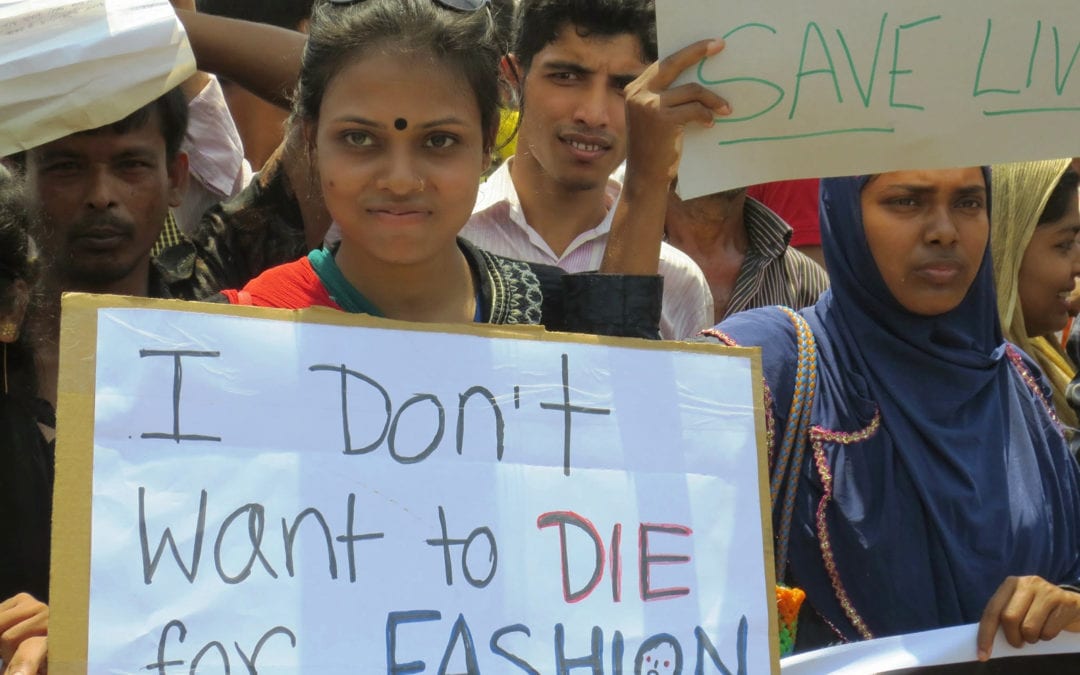
Jun 16, 2021
Jesmin Begum, a Bangladesh garment worker in her early 30s, died as she and hundreds of others rallied for unpaid wages in one of Dhaka’s Export Processing Zones (EPZs).
A sewing operator, Begum was laid off in January from Lenny Fashion, Ltd., after the factory closed. Although management said it would pay unpaid wages by May, the company never fulfilled its commitment, and workers gathered at the Nabinagar-Chandra highway outside the EPZ June 13 to demand payment.
When the workers at Lenny Fashion Ltd. and another factory that was closed by the same company refused to move from the road after two hours, the police used tear gas, rubber bullets and water cannons to disperse them, and Begum died after she fell fleeing the police violence. Dozens of workers also were injured.
“We are always told that in EPZ factories, BEPZA [Bangladesh Export Processing Zones Authority] enforces workers’ rights properly and vigorously, but BEPZA, as in many other previous cases, has miserably failed here that led to the workers’ protest and death of Jesmin,” says Babul Akhter, president of the Bangladesh Garment and Industrial Workers’ Federation (BGIWF)
Worker Rights Abused, EPZs Make Billions
Bangladesh’s eight EPZs received $333.38 million in foreign direct investment and made $7.52 billion from exports in the 2018–2019 fiscal year. Yet Bangladesh workers in EPZs face daunting odds in trying to redress often poor and dangerous factory safety and health conditions, retrieve unpaid wages or end abusive treatment by supervisors because the zones are exempt from the country’s labor laws and workers are prohibited from forming unions.
As a result, they are particularly vulnerable to worker rights abuses. Although they are allowed to organize and form workers welfare associations (WWAs) at their factories, the WWAs do not have the same rights as unions. The ILO Committee of Experts has identified numerous provisions in the WWAs that violate ILO Conventions 87 and 98 on the freedom to form unions an bargain collectively.
The terms and conditions of service for EPZ workers are regulated by BEPZA, essentially eliminating collective bargaining. Labor inspectors are not permitted to inspect factories in the zones and, unlike workers covered under the nation’s labor laws, workers in EPZs do not have the legal right to file a case challenging illegal termination.
In addition, says Akhter, “BEPZA and the employers are systematically dissolving the worker welfare associations in EPZ factories to eliminate any kind of voice of the workers in the workplace.”
With Unions, Workers Advocate for Safe Jobs
Although the government of Bangladesh in 2019 amended the EPZ law with the aim of bringing it more in line with its labor laws and international labor standards, the ILO found the new EPZ Law failed to address the vast majority of these concerns. “Importantly, the new law continues to deny EPZ workers the right to form or join a union,” according to the ILO.
“The EPZ workers must be allowed to exercise their rights to join union of their own choosing, removing the discrimination between the EPZ and non-EPZ workers,” Akhter says.
Without the ability to form unions, garment workers cannot collectively push for safety and health improvements at their workplaces. After more than 1,200 garment workers died in two tragic factory disasters in 2012 and 2013, unions have been a key partner with fashion brands in the Accord on Fire and Building Safety in Bangladesh, a landmark agreement that made factories safer for 2 million garment workers. Worker rights advocates are urging extension of the Accord, which expires in three months.
Yet the BEPZA did not allow the Accord to inspect any of the EPZ factories—all the more reason, worker advocates say, garment workers must be able to form union and collectively bargain.
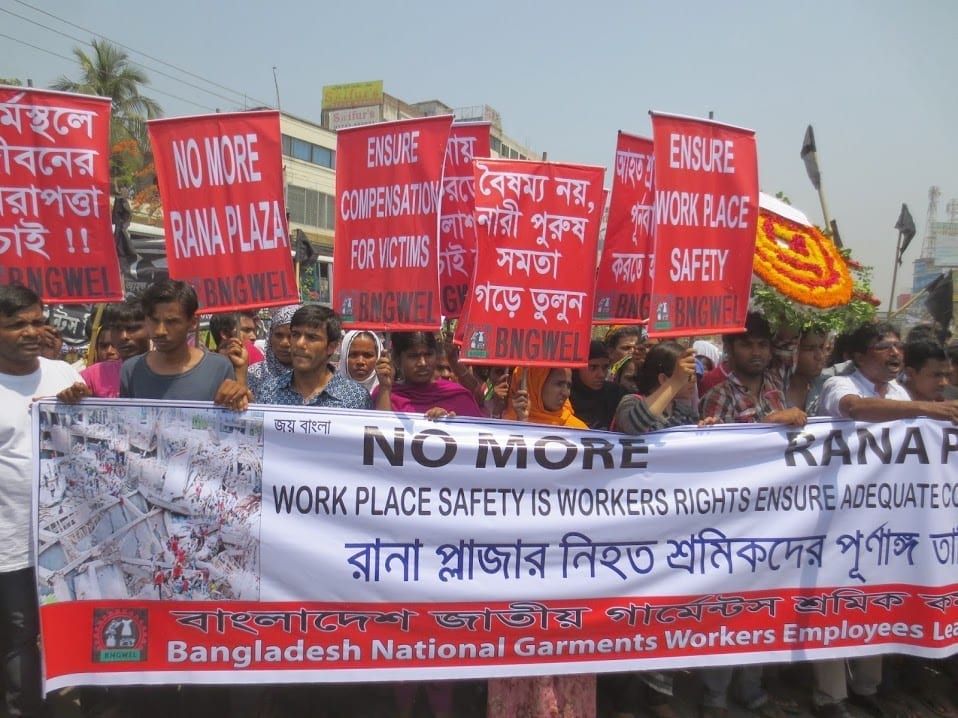
Apr 17, 2019
On a recent Friday, the only day off for Bangladesh garment workers—if they get a day off—I went to visit workers at their homes to better understand how the people who stitch our clothes live their lives. Walking through the puzzling narrow alleys, I entered a tin shed-like building. A corridor tore through the center and on each side were rooms for families. It was in one of these dimly lit rooms where I met Konika, who worked as a sewing operator in a nearby garment factory in Gazipur. In the tiny space where she lived with two children and her husband, she revealed the conditions at her workplace.
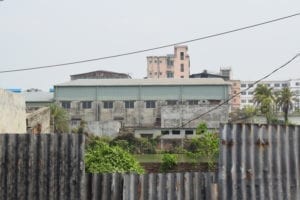
A garment factory in Gazipur. Credit: Solidarity Center/Istiak Ahmed Inam
“We are under intense pressure to meet the target production,” she says. “I used to produce 70 pieces an hour but now, after our minimum wage has been increased by the government, I must produce 90 pieces. I have to think twice if I want to use the washroom. What if I miss my deadline? What if my production manager sees me? I rest only if there’s a problem with my machine and am lucky if the mechanic is not close by.”
Worker Safety under Threat Again
Six years after the deadly April 24, 2013, Rana Plaza building collapse killed 1,134 garment workers and injured hundreds more, the government is on the verge of rolling back international safety inspections even as employers and the government are blocking workers’ ability to exercise their right to form unions to improve working conditions.
Disasters like Rana Plaza or the 2012 Tazreen Fashions fire, which together killed more than 112 garment workers, prompted global outrage and mobilized workers in protest of unsafe and deadly working conditions, forcing major fashion brands and Bangladesh suppliers to address safety issues. As a result, unions, suppliers and many international brands formed the Bangladesh Accord on Fire and Building Safety, a binding agreement that helped make many garment factories safer. Despite its success, however, the accord may be dismantled, leaving workers at the mercy of a system unprepared to improve factory safety, according to a recent report.
Meanwhile, fashion companies often send their own inspection teams to factories, but the effectiveness of these visits is debatable.
“Our managers make us tell the foreigners [safety inspectors] we don’t work until 10 p.m., that we receive our wages regularly and we even receive our doctor’s fees. None of this is true,” says Konika. On many occasions, the inspection team strolls around the factory, only gathering data from factory management and not from the workers, thus releasing inaccurate reports.
Konika and her co-workers face odds that would dishearten many: factory owners escalating pressure to produce and depriving workers of their basic rights, and corporations wearing a mask of “doing all they can” for workers, while in fact, doing nothing.
Yet Konika, on her day off, enjoys time with her family, despite recognizing the injustices she is likely to face tomorrow.
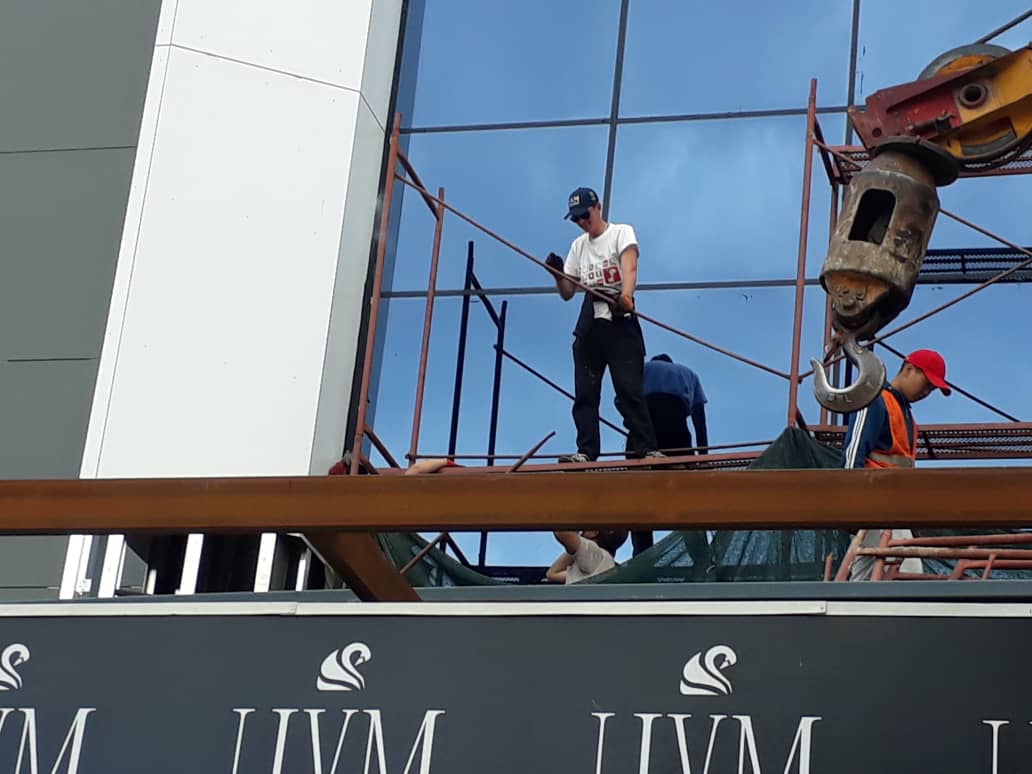
Mar 8, 2019
An independent,12-month monitoring program by a coalition of worker rights advocates in Kyrgyzstan found that the lives and safety of working people are at significantly higher risk than official data indicates—requiring urgent changes to the country’s occupational safety and health (OSH) monitoring system.
“I am asking government to take OSH issues into consideration because they envelop the lives of our workers,” said Eldiyar Karachalov, deputy president of the Kyrgyz union representing construction workers, at a roundtable briefing last month.
The event—which convened worker rights advocates, lawmakers, government administrators and employers for discussions on worker safety—highlighted data collected in 2018 by monitors from Kyrgyz metallurgy and mining, construction, garment and food processing unions and local NGOs Bir Duino Kyrgyzstan and the Insan Leilek Foundation.
According to official labor inspection statistics, 3,808 OSH violations and incidents occurred in 2018. However, the unions’ independent monitoring program found 500 previously unreported OSH violations and incidents—including 155 injuries and 15 deaths. Because most of the unreported OSH incidents occurred in informal-sector workplaces, unions are requesting that the country’s labor monitoring system be expanded into that sector. More than 70 percent of Kyrgyz workers are informal and so have little protection by trade unions or labor laws.
The entity with legal jurisdiction over Kyrgyzstan’s safety inspection system, StateEcoTechInspection, reports limited ability to collect data due to scarce resources. Since 2012, the number of full-time labor inspectors in Kyrgyzstan has fallen from 62 to 23.
“It is absolutely necessary to enlarge the labor inspection authorities and staff,” said Karachalov.
The unions and their NGO partners hope to present their data and recommendations to Parliament during an upcoming hearing on OSH reform. Union recommendations will include a call for adequate funding, an increase in the number of labor inspectors, better training of inspectors, employer-funded safety training for workers and employer-provided personal protective equipment for workers.
According to International Labor Organization (ILO) data, some 2.3 million women and men around the world succumb to work-related accidents or diseases every year, including 340 million victims of occupational accidents and 160 million victims of work-related illnesses. The ILO reports 11,0000 fatal occupational accidents annually in the 12-member states comprising the Commonwealth of Independent States—Azerbaijan, Armenia, Belarus, Georgia, Kazakhstan, Kyrgyzstan, Moldova, Russia, Tajikistan, Turkmenistan and Uzbekistan—but points to “gross underreporting” of occupational accidents and diseases in the region.
Kyrgyzstan is one of the region’s poorest countries. Although the official unemployment rate hovers around 8 percent, more than 1 million Kyrgyz nationals are estimated to be working abroad, particularly in Russia and neighboring Kazakhstan, where wages are higher but conditions for migrant workers can be dire. In Kyrgyzstan, the Solidarity Center aims to strengthen union representation to protect workplace safety and health and secure protections for Kyrgyz workers who migrate for jobs.
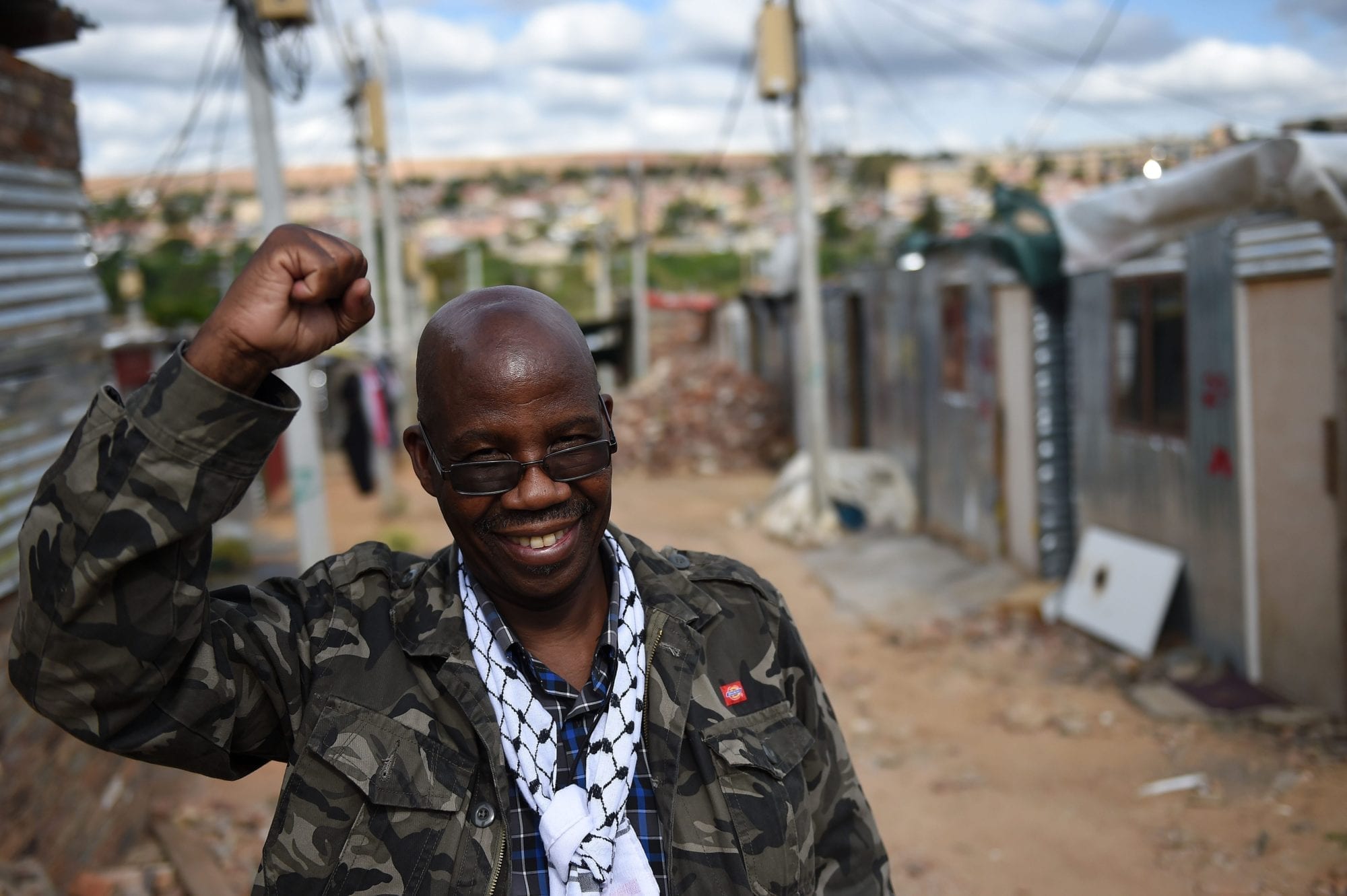
Oct 4, 2018
When Joe Montisetse came to South Africa from Botswana to work in gold mines in the early 1980s, he saw a black pool of water deep in a mine that signified deadly methane. Yet after he brought up the issue to supervisors, they insisted he continue working. Montisetse refused.
Two co-workers were killed a few hours later when the methane exploded.
Millions of jobs around the world do not offer safe and healthy workplaces—nor do they provide wages that enable workers to support themselves and their families or social protections and the sense of dignity that allow workers to enjoy the benefits of their own hard work.
To highlight the lack of decent work, each year on October 7, unions and their allies mark World Day for Decent Work. This year, they are calling for minimum wage-floors sufficient to ensure a decent standard of living and the right of all workers to join a union and bargain collectively.
Today, Montisetse is newly elected president of the National Union of Mineworkers, a position he achieved after helping form a local union at the gold mine soon after his co-workers’ deaths. After they formed the union, workers were safer, he says.
“We formed a union as mine workers to defend against oppression and exploitation.”
This year, the 10th anniversary of the World Day for Decent Work, workers like Montisete highlight the importance of the freedom to form unions and bargain collectively—fundamental human rights that enable workers to achieve decent work by joining together and successfully challenging global corporate practices that too often, risk lives and livelihoods.
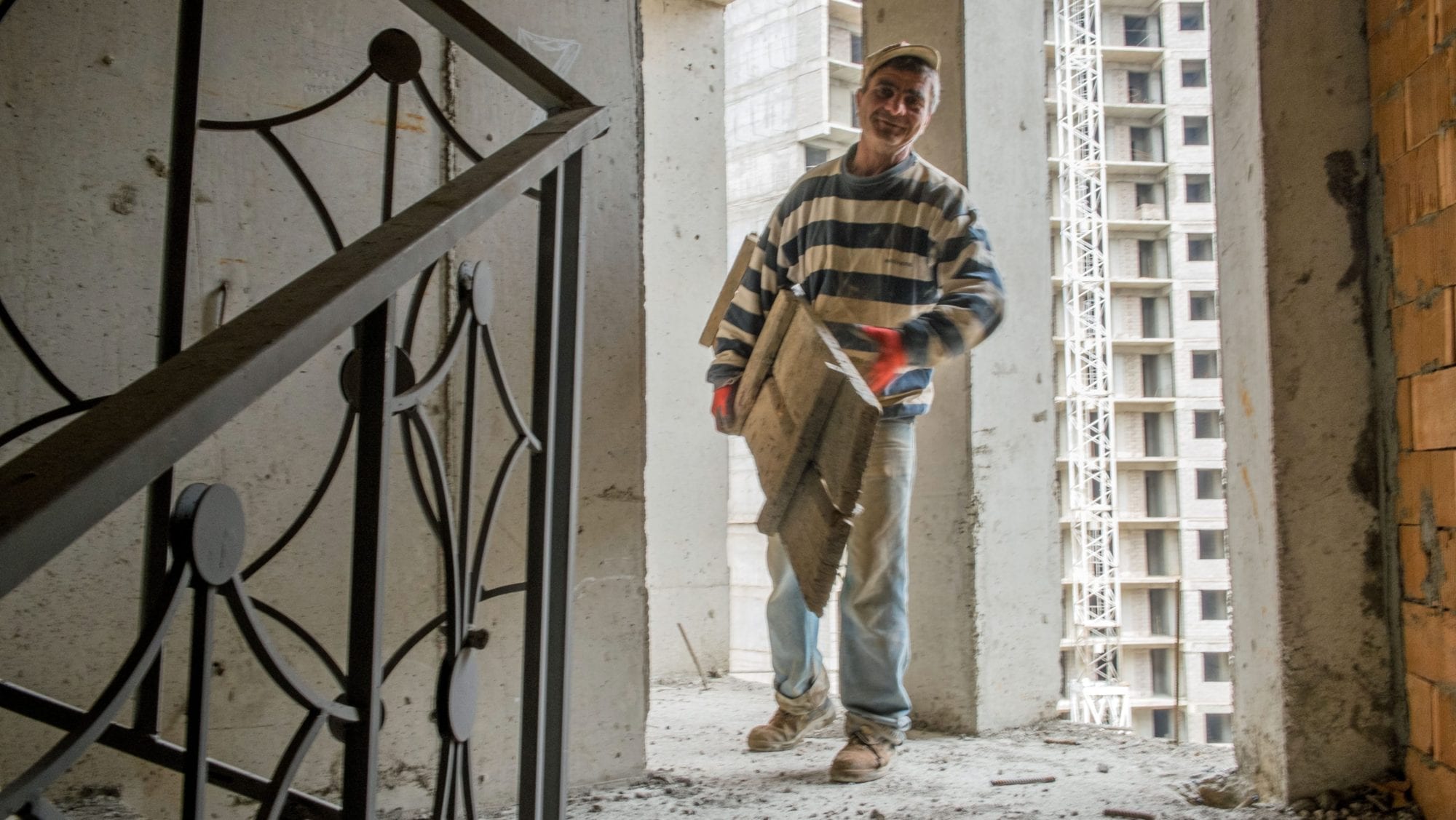
Mar 27, 2018
Georgia’s new workplace safety and health law is a step forward but does not include sufficient enforcement mechanisms and only covers workers in a few industries, according to the Georgia Trade Union Confederation (GTUC).
“What Georgia’s workers desperately need are laws to force employers to take their safety seriously, and hold them criminally responsible when they do not,” says GTUC Vice President Raisa Liparteliani. For the current labor laws to have any effect, “we first need an inspection department with the clout to back them up,” she says.
Some 455 workers died and 793 were injured on the job between 2007 and 2017, according to the GTUC, using data from the Georgia Ministry of Internal Affairs. Already this year, 12 workers have died. These figures do not include workers who have died or were injured because of occupational illnesses like black lung disease, a common and often fatal workplace hazard for miners, or other on-the-job injuries that manifest after the immediate incident. Also, according to the GTUC, some industrial accidents are not reported in part because employers threaten or blackmail workers into remaining silent.
The law, in effect March 21, covers only workers in high risk, hazardous and dangerous work, and stipulates that workplaces may be inspected only at the invitation of the owner, who must be given at least five days notice.
“The law does not provide regulations that create an efficient, fully fledged labor inspection system in compliance with the International Labor Organization (ILO) convention on labor inspection (Convention 81), in which inspectors have unlimited, free access to all public and private workplaces without the permission of employers or other officials,” according to the GTUC.
Restoring Labor Rights
Under a previous government, Georgia’s labor laws in 2006 were replaced with a labor code focused on the rights of employers. A new government in 2015 created a labor inspection department in line to meet the requirements of an Association Agreement with the European Union. Yet since then, says Liparteliani, the number of people dying and being injured in the workplace has instead increased.
A major shortcoming of the new labor inspection department is that it says “nothing of other areas of labor rights,” she says.
“Labor rights are inseparable from safety issues; a vast majority of workplace accidents occur due to physical fatigue, which is understandable when workers can’t take holidays, can’t take days off when they’re ill, and are forced to work extra hours.”
As it works to establish a labor inspection system in compliance with ILO standards, the GTUC plans to bring the issue to the Tripartite Social Partnership Commission that oversees the European Union-Georgia Association Agreement.






